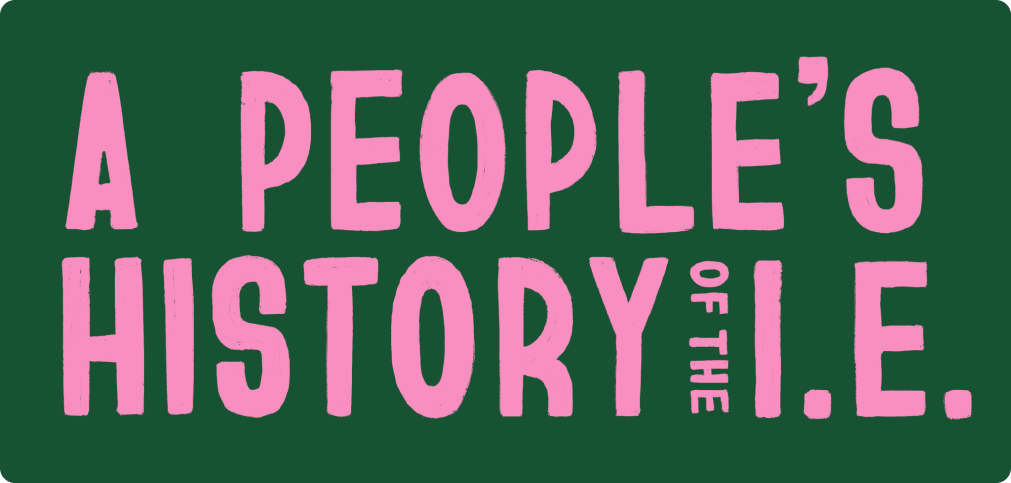About
A People’s History of the IE documents, preserves, and maps stories of community building, patterns of segregation, entrepreneurship, and organizing for civil rights among historic communities of color, working people, and LGBTQ+ individuals in Riverside and San Bernardino Counties (or Inland Empire—the I.E.).
The archive includes digitized audio and video oral history interviews; photographs; and other printed materials. The GIS-based maps and related StoryMaps utilize the digital archives, census data, and other regional resources. This website brings these materials together in one place.
Roots
A People’s History of the I.E. began with two simple recognitions. One is that our Inland Southern California location has traditionally been treated as a hinterland to the major coastal cities nearby. What would it look like to bring the I.E. to the center, along with the people on whose backs the region has been built? The second is that since the redlining maps produced for banks and mortgage companies from the late 1930s and early 1940s are not available for the I.E., we lack easily comprehensible tools to visualize historical forces of segregation. By mapping census data, information drawn from the lived experiences of community members, and other historical sources, our grassroots efforts can trace this and far more.
More Info
The digital archive utilizes an open-source Omeka S content management system hosted by the University of California, Riverside, and is considered a post-custodial collection. This means that we steward digital materials so that the physical items stay in the communities where they are from; we also host digital items from the archives of other community organizations on their behalf. The ArcGIS and StoryMaps are hosted by University of Redlands, which also makes the maps available for community researchers to use.
We work in partnership with individuals and institutions to help organize their oral histories, conduct new interviews, and digitize materials. These include California State University, San Bernardino, and the Wilmer Amina Carter Foundation’s “Bridges That Carried Us Over Project: Documenting Black History in the Inland Empire”; Casa de Culturas; Inland Mexican Heritage; Loma Linda Area Parks and Historical Society; People’s Collective for Environmental Justice; Relevancy & History Project partnership between UCR and California State Parks; Riverside County Mexican American Historical Society; and A. K. Smiley Public Library, Redlands.
